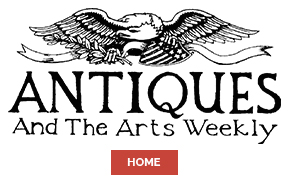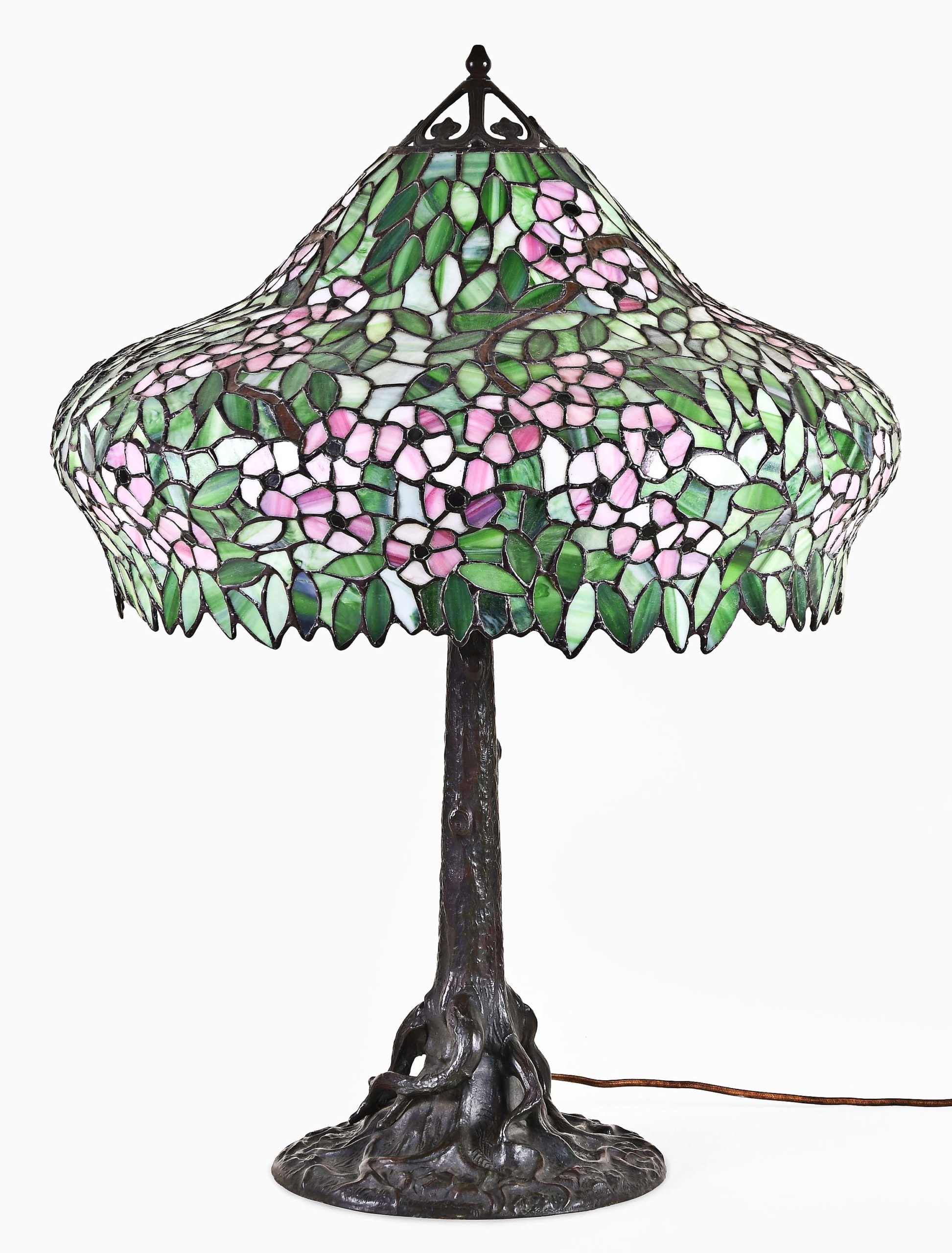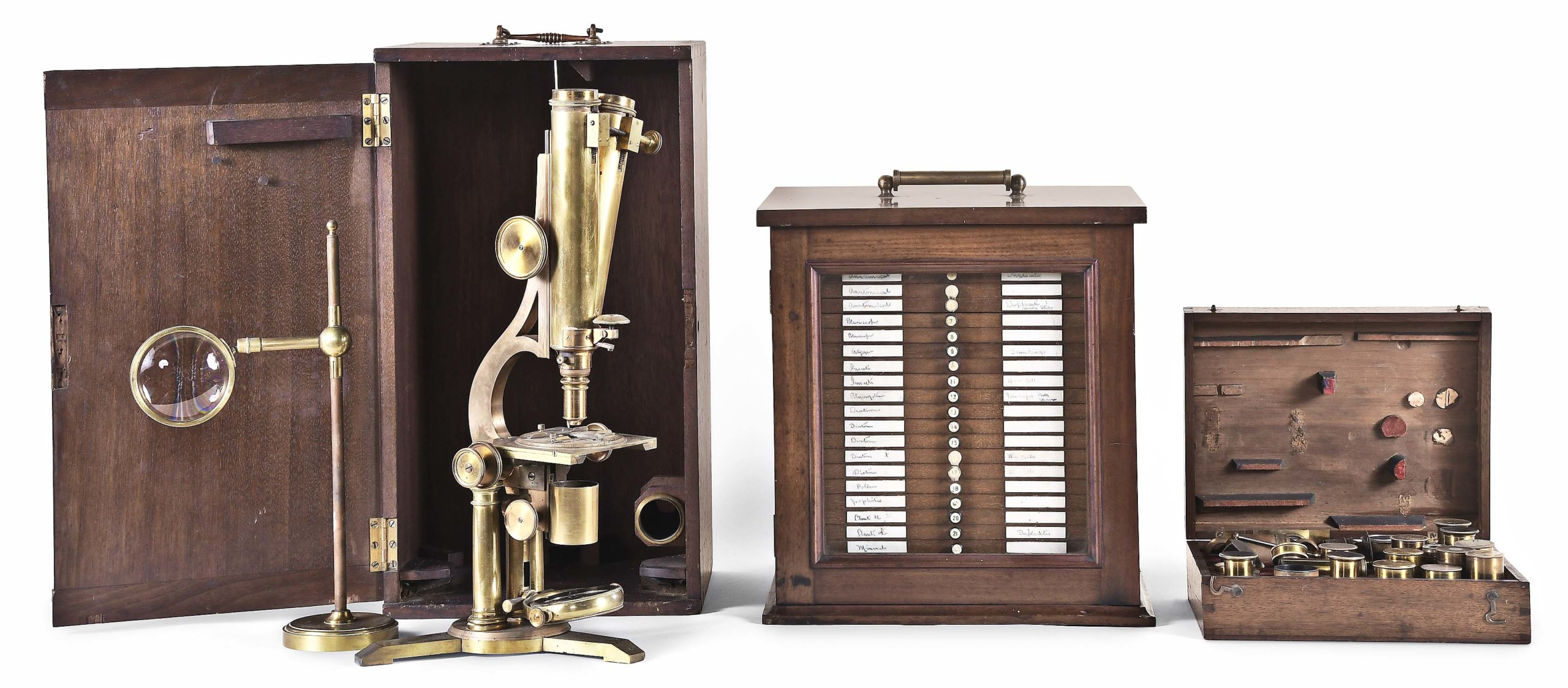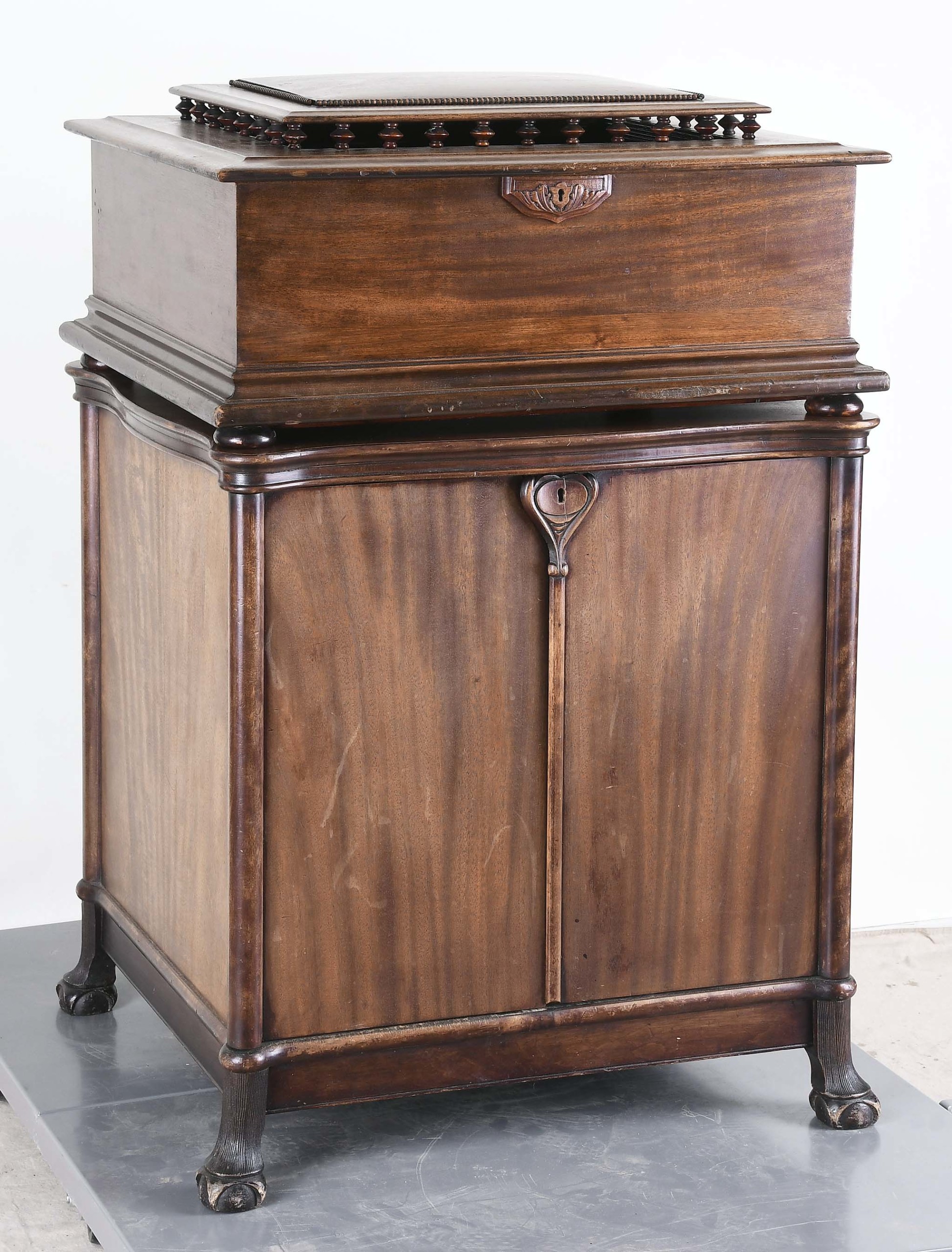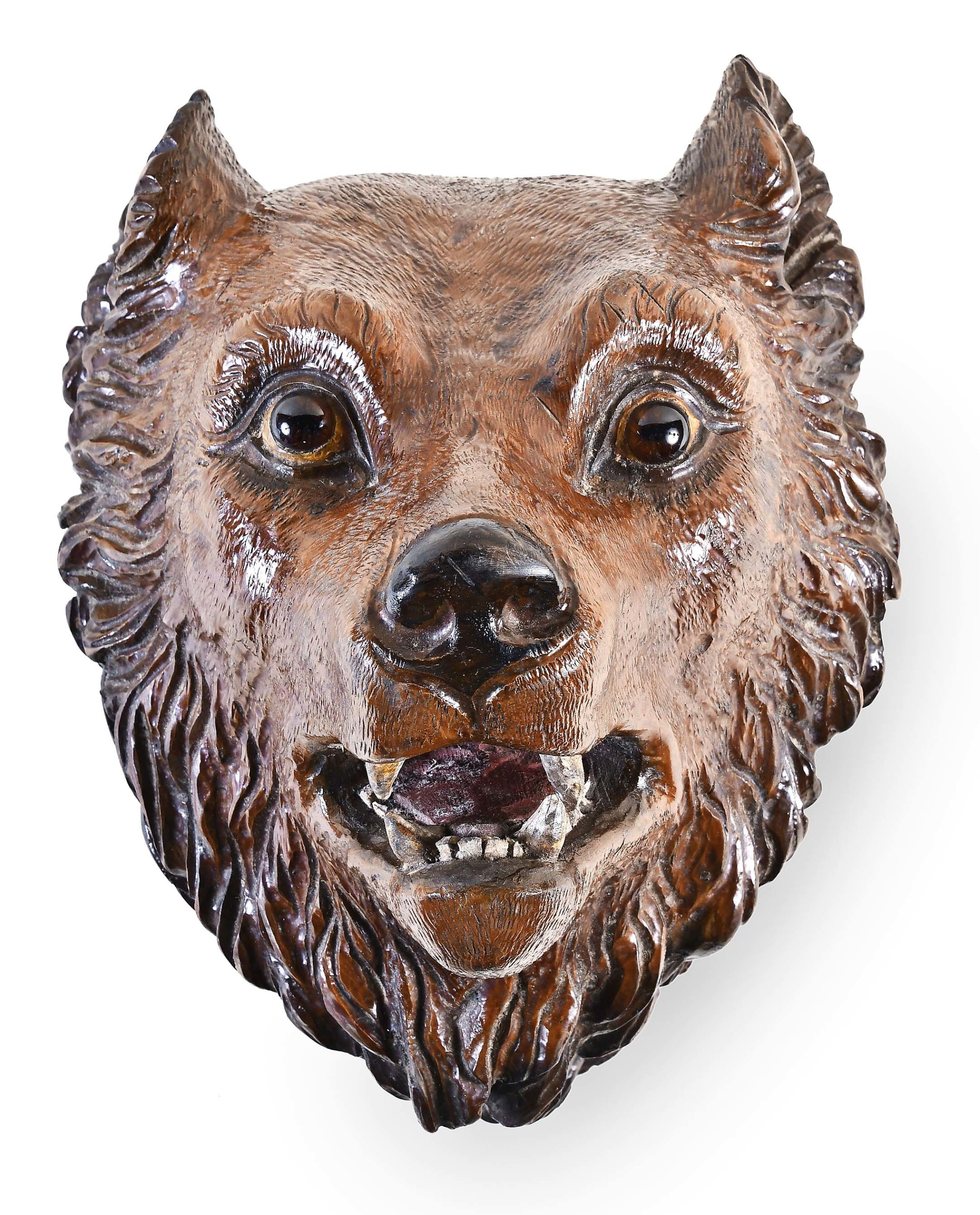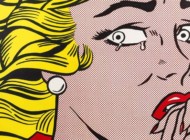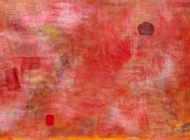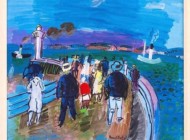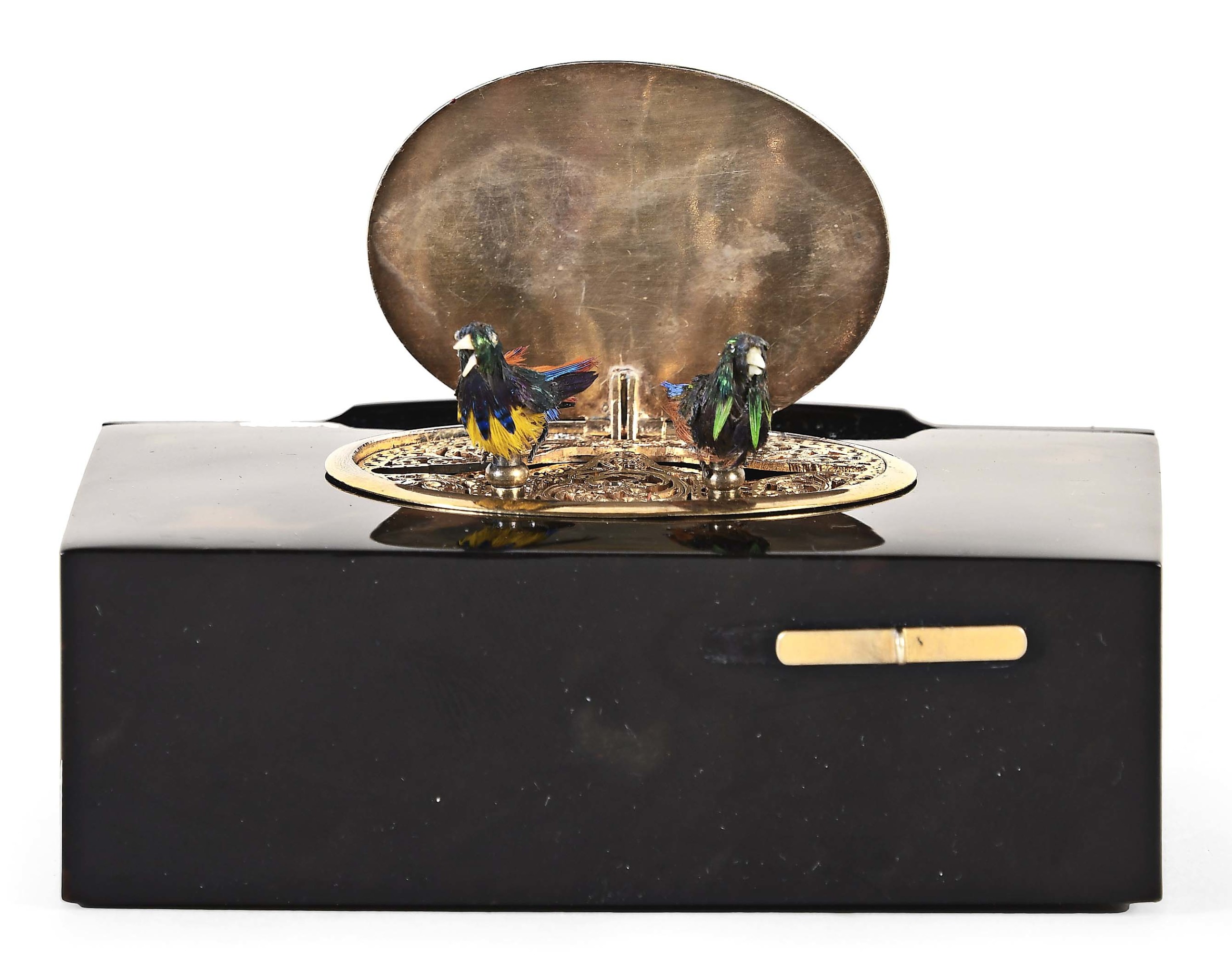
The top lot in the auction was this late Nineteenth Century singing bird box, attributed to Bontems, Paris, and retailed by Finnigan’s, London. Measuring 1¼ by 4 by 2¾ inches, the rare music box danced to $26,400 ($6/8,000).
Review by Carly Timpson
CANDIA, N.H.— While Schmitt Horan & Company is best known for its horological auctions, the firm’s August 9 online auction also included American and European paintings, art glass, inkwells, tobacco jars, automata and music boxes, coins, rare books and more. Nearly 290 lots were on offer, and the sale realized a total of $332,000 with a 100 percent sell-through rate.
The firm’s president, Daniel Horan, shared, “The antiques market is in flux, prices aren’t what they were 25 years ago but given today’s market we thought prices were all good to strong. Having four platforms, the three big ones — LiveAuctioneers, Bidsquare and Invaluable — as well as our own proprietary system, helps to level the playing field for smaller regional boutique auction houses like ours. We have broader international reach now with the help of these platforms whereas only a few of the top auction houses used to, and that gives us confidence to explore more now that we have that reach. We had bidders from the US, Mexico, Canada, multiple in the UK, Australia, Switzerland, Thailand and Hong Kong.” In total, Horan reported more than 1,120 registered bidders.
Horan added, “We are more established with horological and coins and jewelry but we’re trying to build the brand and expand our offerings and show that we can perform across the field in all markets. To build our brand over the past few years, since moving to the new gallery in 2021, we’ve been doing three live sales a year as well as several timed auctions in between. Spring and fall we’ve been doing more of the horological and mid summer, to coincide with Antiques Week in New Hampshire, we do a more general antiques and estate sale, and it seems to be gaining some momentum.”
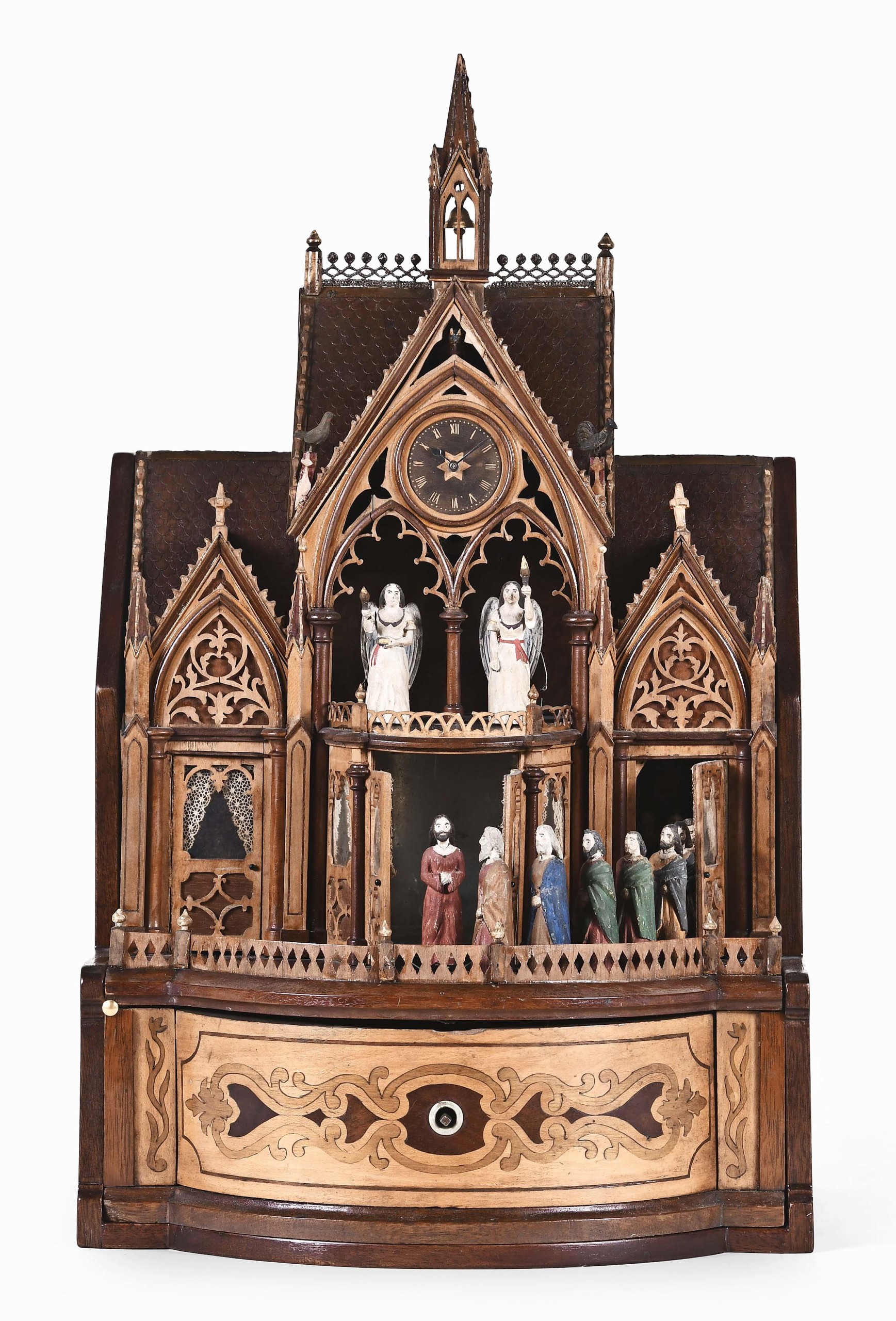
“Satan pops out when Christ goes back in! We thought our estimate was reasonable, but it exceeded it, selling to a new buyer, a collector in Texas,” remarked Horan of this late Nineteenth Century architectural Christ and Apostles automaton clock, 17½ inches high by 11 inches wide by 10 inches deep; it achieved $9,000, leading the selection of clocks and watches ($4/5,000).
Leading the sale was a Nineteenth Century double singing bird box attributed to Bontems, Paris, and retailed by Finnigans, London. Horan noted, “we had high hopes for it because singing bird boxes are uncommon — we might sell one to two a year — and this one had two birds rather than one, which is extremely rare. I spoke with a restorer in Europe and he’s only seen one like it in his 60 years in business, so there’s a good chance that this was only the second to come to public auction, and it performed accordingly.” The birds, perched atop a rectangular turtle shell case, sold to an online buyer for $26,400 — a significant improvement upon the piece’s $8,000 high estimate.
The sale’s second-highest price went to Observations on the art and trade of Clock and Watch-Making by J. Richardson (London, 1812). Though it carried a $200/300 estimate, this first edition resource achieved $18,000. Horan told us that the book was not a great surprise, as many of their regular bidders would be interested in books on important watch and clock topics. However, there were “Two highly motivated bidders competing for this book. It was part of an extensive collection of antique horological books, and the winning bidder was very motivated to get it because he was interested in keeping the entire collection intact.” The next two highest prices in the sale were also books from that collection and were won by the same individual. William Parr’s A Treatise on Pocket-Watches (London, 1804) brought $13,200, while C. F. Partington’s The Clock and Watch-Makers’ Complete Guide. Theoretical and Practical (London, 1825) brought $11,400.
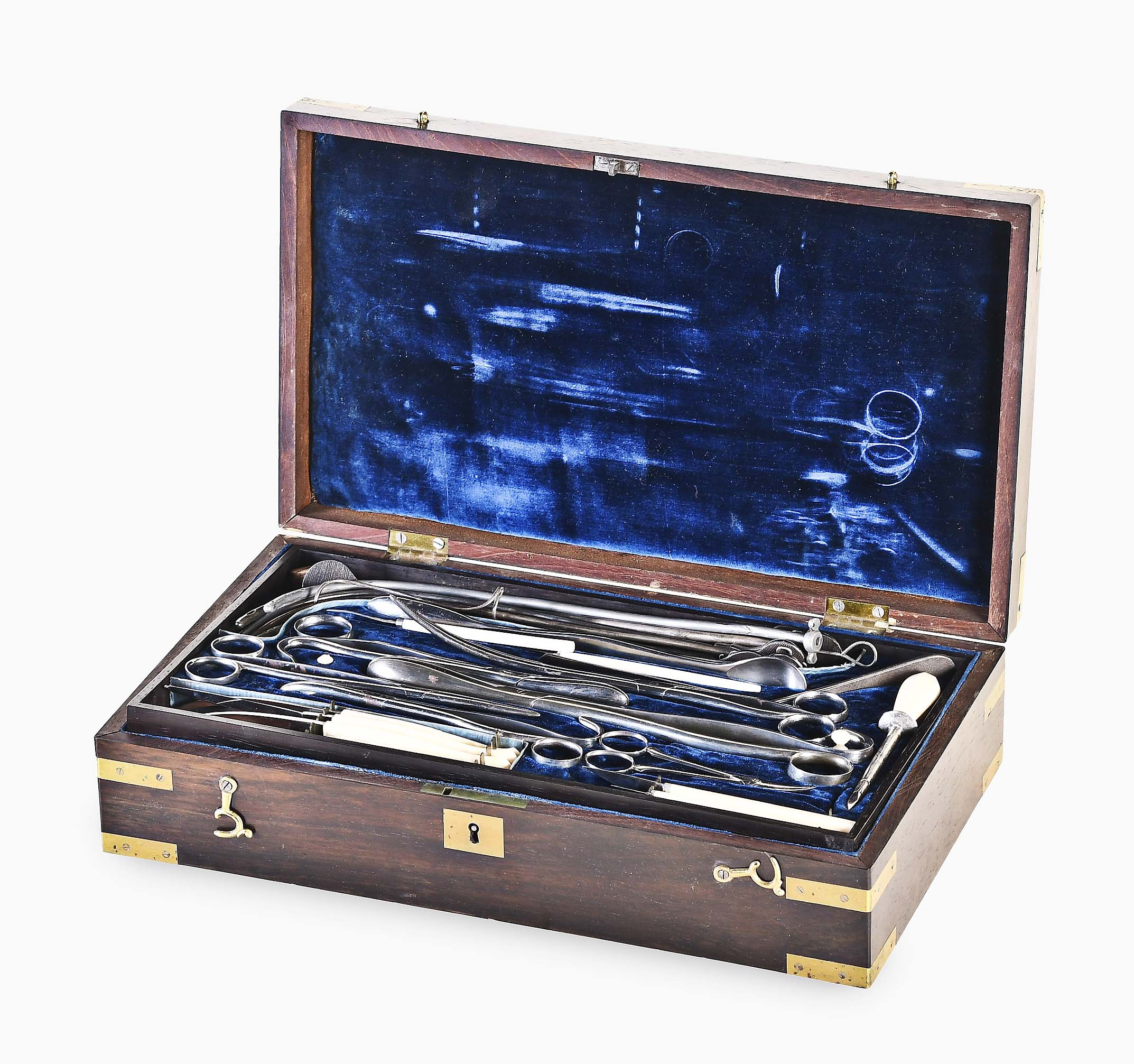
This mid Nineteenth Century surgical set by Rose New York came from the estate of one doctor and sold to another for $9,000 ($900-$1,200).
Several of the items in the auction came from the estate of a surgeon in New York City. Leading the selection from his collection was a mid Nineteenth Century surgical set by Rose, New York. The set, which contained scalpels, saws, trephines, a tourniquet, catheters, scissors and forceps, was housed in a rosewood box with a brass plaque engraved “Dr. S.P. White.” It sold, for $9,000, “to someone who also had ‘Dr’ in front of his name — from one MD to another,” noted Horan.
As a doctor, the New York collector had an appreciation for scientific instruments, and his collection also included a circa 1860s-70s Grand American microscope by Joseph Zentmayer, Philadelphia. The microscope was paired with a mahogany box containing numerous eyepieces, lenses and other accessories, as well as a polished mahogany box with 25 drawers of prepared slides and a plaque engraved “R. & J. Beck London.” Altogether, the set achieved $2,640.
The New York doctor’s estate also consigned paintings, Black Forest carvings, tobacco boxes and inkwells. The top painting from his collection was “Spring Muse,” a circa 1910 oil on board by Joseph Tomanek that achieved $2,160. The painting had been part of the consignor’s collection since he purchased it at Phillips in 1996, so it was back on the market after nearly 30 years, which was certainly a draw. On the reverse, there was a painted image of two clowns. The leading Black Forest carving was of a bear’s head done in either Germany or Switzerland during the late Nineteenth or early Twentieth Century; it sold via Bidsquare to a buyer in the Midwest for $1,920. A dachshund tobacco box earned $1,320, the highest price in that category, selling to a new buyer in the Mid Atlantic region. One of the more unusual items in the collection was a cast bronze snail-child inkwell, which topped those selections at $660, selling to a new purchaser also based in the Mid Atlantic region.
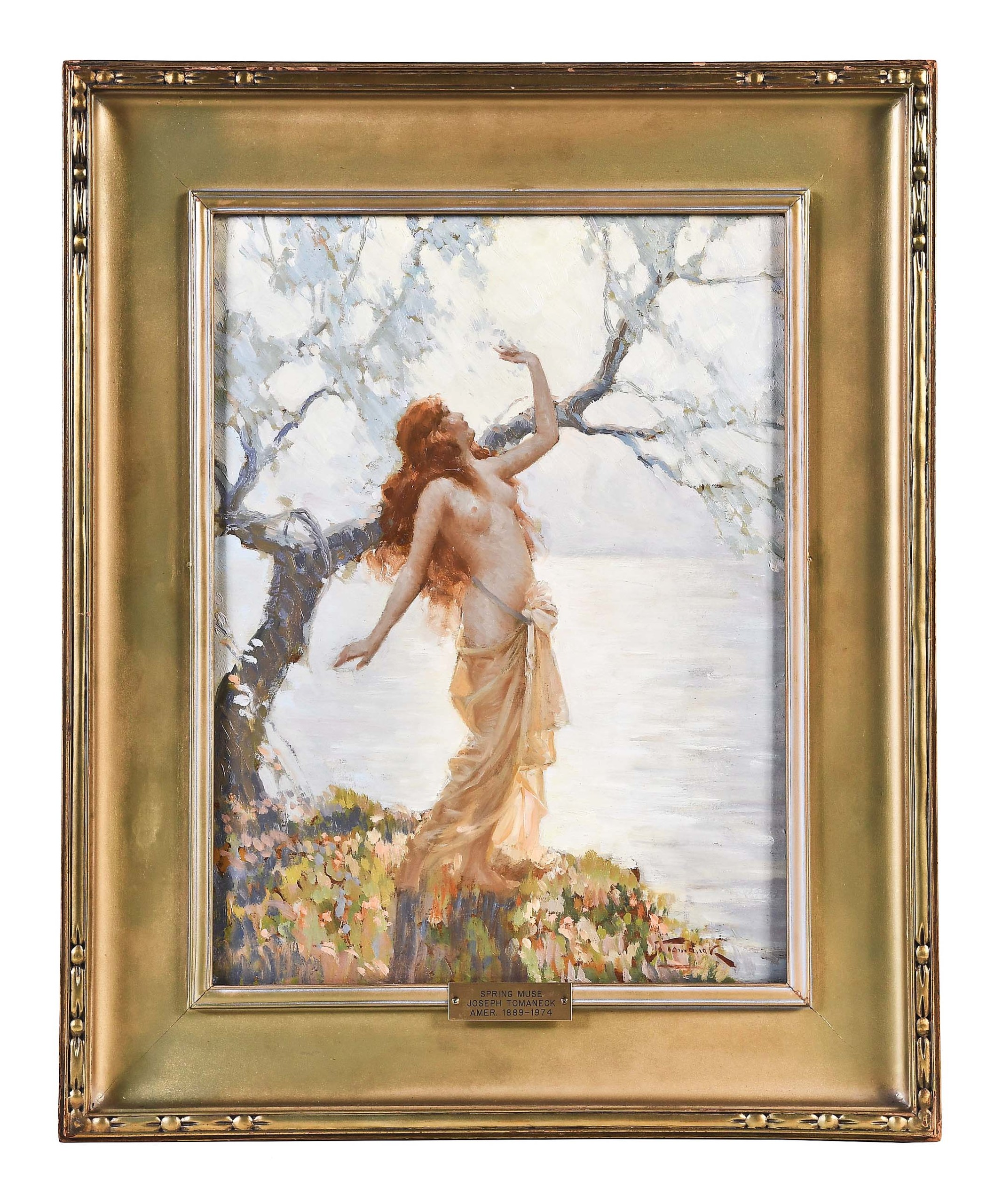
Joseph Tomanek’s (American, 1889-1974) oil on board “Spring Muse,” 12 by 16 inches, found a new home for $2,160 ($900-$1,200).
Other notable pieces from the doctor’s collection included an art glass lamp attributed to the Unique Art Glass & Metal Company and a historic cane formed from the Connecticut Charter Oak tree. The lamp “had an impressive, large decorative base that collectors like,” according to Horan, and it brought $3,600. The cane, which Horan called “a rare opportunity for a Connecticut or Colonial history collector,” sold to a new buyer in the Midwest for $1,680.
“A selection of Stickley furniture, about 10-12 signed pieces, came from the estate of one of our good clock buyers out in the Santa Cruz area. We transported it out to New England from California, along with the clock collection. The consignors are thrilled with the results,” shared Horan. The leading Stickley piece was a circa 1910 oak smokers cabinet, number 89; it achieved $2,160 on a $500/700 estimate.
Prices quoted include the buyer’s premium as reported by the auction house. For information, www.schmitt-horan.com or 603-432-2237.
